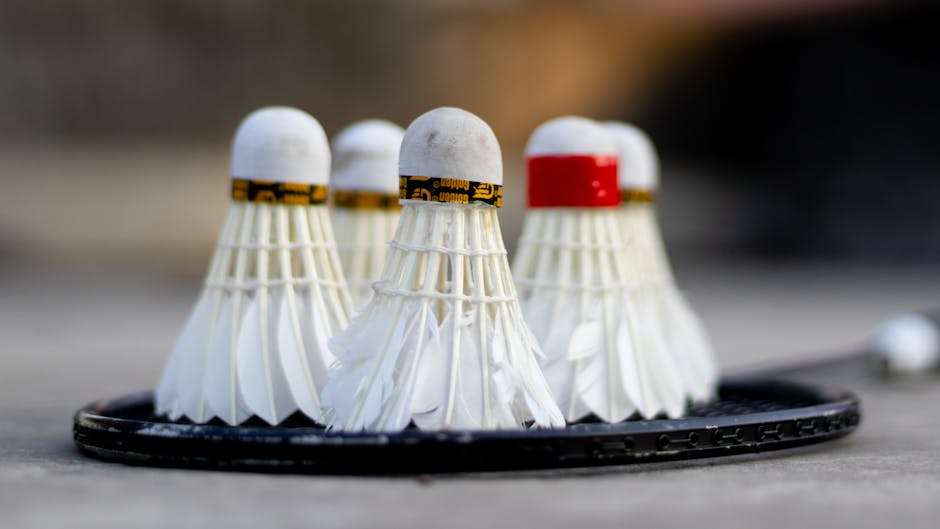Shuttle Flash Badminton: The History and Evolution of the Game
When you think of sports that combine agility, speed, and precision, badminton might not be the first that comes to mind. However, this dynamic game has been captivating audiences and players alike for centuries. From its humble beginnings to its status as an Olympic sport, badminton has a rich history and an exciting evolution. Join us as we delve into the fascinating journey of shuttle flash badminton. 🏸
Table of Contents
1. Introduction to Badminton
2. The Origins of Badminton
3. Evolution of the Game
4. Badminton in the Modern Era
5. Conclusion
6. FAQs
Introduction to Badminton
Badminton is more than just a backyard pastime; it’s a sport that demands quick reflexes, strategic thinking, and exceptional hand-eye coordination. Known for its light shuttlecock and fast-paced rallies, badminton offers a unique blend of physical fitness and mental agility. Whether you’re a casual player or a competitive enthusiast, understanding the history and evolution of badminton enriches your appreciation of the game.
The Origins of Badminton
The roots of badminton can be traced back over 2,000 years to ancient civilizations in Asia and Europe. Games involving shuttlecocks and rackets were played in China, Greece, and India, but it was in India where the modern form of badminton began to take shape.
Poon, the precursor to badminton 🎯
In the mid-19th century, British officers in India were introduced to a game called Poona, which was played with a shuttlecock and rackets. They brought it back to England, where it quickly gained popularity.
The Birth of Modern Badminton 🏆
The official birth of modern badminton is attributed to a party in 1873 held at the Duke of Beaufort’s estate, Badminton House, in Gloucestershire. It was there that the game was refined and gained its current name.
Evolution of the Game
Establishment of Rules 📜
As badminton’s popularity soared, the need for standardized rules became apparent. In 1893, the Badminton Association of England was formed, and the first official set of rules was published. This laid the groundwork for the organized competitions we see today.
Global Expansion 🌍
Badminton spread across the globe, with countries like Denmark, the United States, and Canada adopting the sport. Each nation contributed to its development, with different styles and techniques emerging that enriched the game.
Technological Advancements ⚙️
Over the years, advancements in technology have transformed badminton equipment. Lightweight carbon fiber rackets, high-performance shuttlecocks, and advanced court surfaces have all contributed to the game’s evolution, making it faster and more exciting than ever.
Badminton in the Modern Era
Olympic Glory 🥇
Badminton’s inclusion in the 1992 Olympic Games in Barcelona marked a significant milestone in its history. Since then, it has been a staple of the Summer Olympics, showcasing the best talents from around the world.
Professional Leagues and Tournaments 🏅
Today, badminton boasts professional circuits with prestigious tournaments such as the All England Open, BWF World Championships, and the Thomas Cup. These events highlight the sport’s global appeal and the prowess of its top athletes.
Popularity and Participation 📈
Badminton continues to grow in popularity, with millions of players and fans worldwide. Its accessibility and low cost make it a favorite among people of all ages and backgrounds, ensuring its place as a beloved sport.
Conclusion
From its ancient origins to its modern-day status as an Olympic sport, badminton has come a long way. Its evolution is a testament to the passion and innovation of its players and fans. Whether you’re playing in a local gym or watching the world’s best compete on the international stage, the spirit of badminton shines through in every match. As the game continues to grow and evolve, its rich history remains an integral part of its charm and appeal. So grab a racket, hit the court, and become a part of badminton’s ongoing story! 🏸
FAQs
1. How did badminton get its name?
Badminton got its name from Badminton House in Gloucestershire, England, where the modern version of the game was first played in the late 19th century.
2. When did badminton become an Olympic sport?
Badminton became an Olympic sport in 1992 at the Barcelona Summer Games, making its debut in the international sporting arena.
3. What are the basic rules of badminton?
The basic rules include using a racket to hit the shuttlecock over the net, aiming to land it within the opponent’s court. Matches can be played in singles or doubles format, with the aim of winning sets by being the first to reach 21 points.
4. What equipment is needed to play badminton?
To play badminton, you need a racket, shuttlecock, and a badminton court with a net. Lightweight sportswear and non-marking shoes are also recommended for optimal performance.
5. Why is badminton considered a fast-paced sport?
Badminton is considered fast-paced due to the speed at which the shuttlecock travels, the rapid exchanges between players, and the quick reflexes required to respond effectively during rallies.
